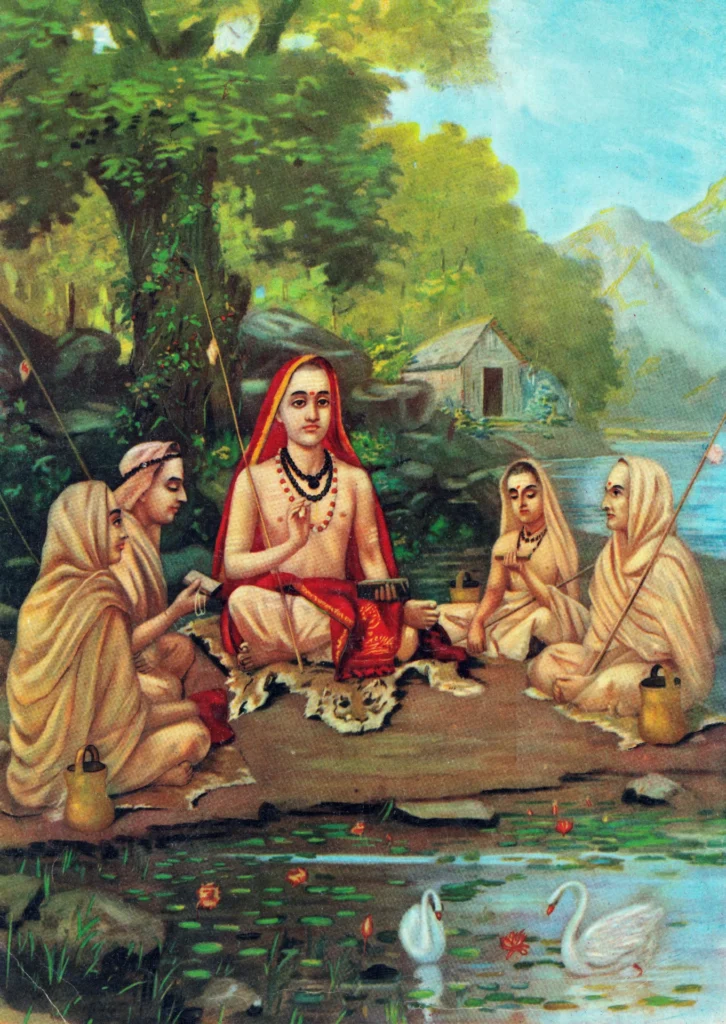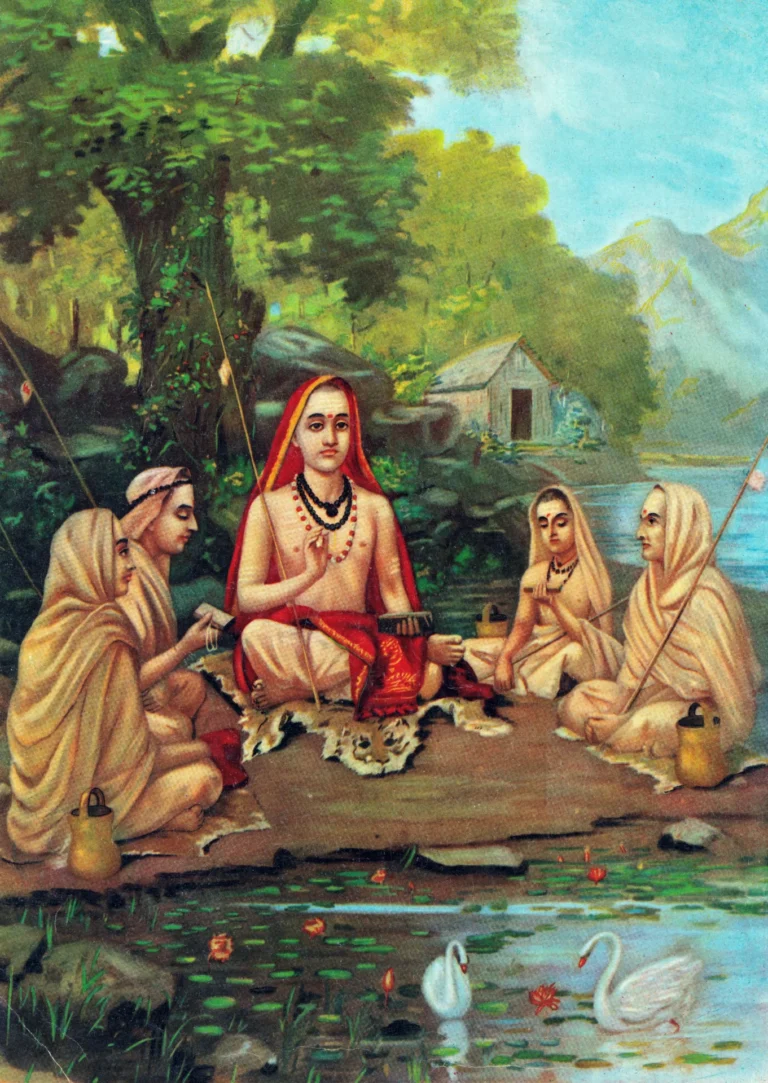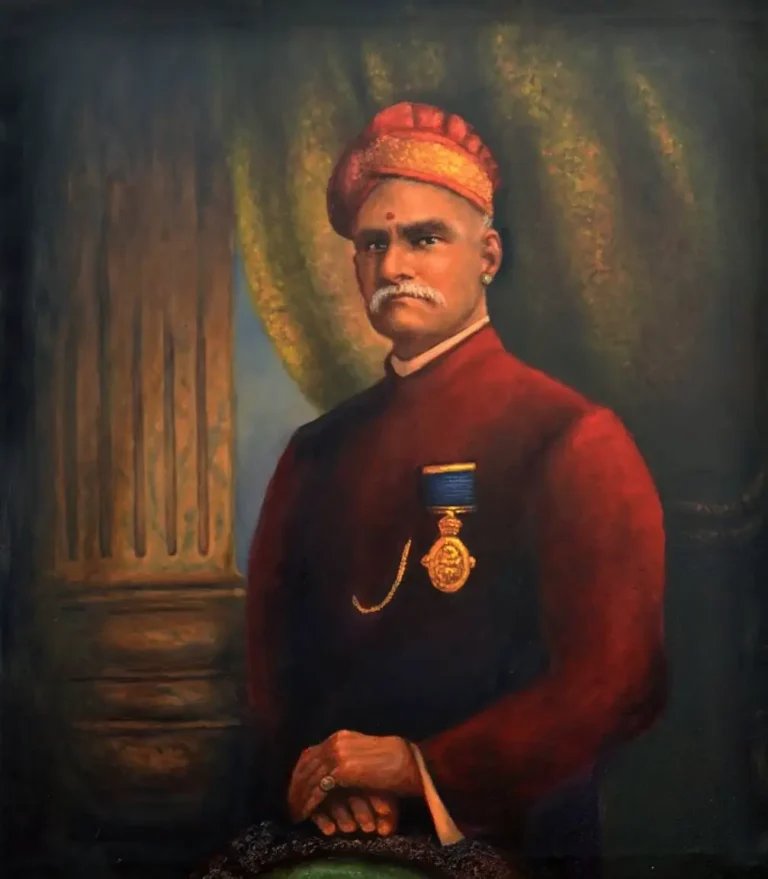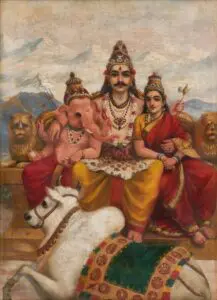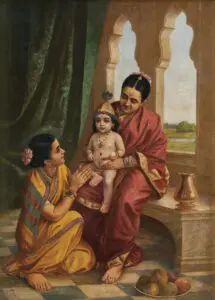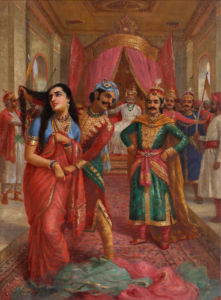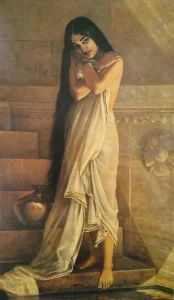Sankaracharya
Created by the celebrated artist Raja Ravi Varma around 1904, this oleograph portrays Adi Shankaracharya, a central figure in Hindu philosophy, in a seated posture alongside his four prominent disciples: Padmapadacharya, Thotakacharya, Hastamalakacharya, and Sureshwaracharya. The artist employs vibrant colors and lush green surroundings to emphasize Shankaracharya's connection to nature and his spiritual authority, symbolized by the red shawl he wears. This painting captures a significant moment in the dissemination of Hindu philosophy and the establishment of key centers of learning known as Mathas.
Year 1904
About the Artwork
Adi Shankaracharya was instrumental in the establishment of the non-dualistic school of thought known as Advaita Vedanta in the early 8th century. Raja Ravi Varma's painting, created over a millennium later, immortalizes his legacy by portraying the moment where Shankaracharya assigns his four disciples to oversee four major Mathas across India. This act not only marked the spread of his teachings but also solidified the philosophical foundations that shape Hindu thought to this day. In this artwork, the lush greenery surrounding the figures serves as a reminder of the natural simplicity that underscores Shankaracharya's teachings, while his red shawl denotes his role as a spiritual leader.
Did You Know
Adi Shankaracharya is celebrated for consolidating the core principles of Advaita Vedanta, which emphasizes the oneness of the individual soul (Atman) with the ultimate reality (Brahman), profoundly influencing Hindu philosophy.
Shankaracharya’s teachings have shaped various modern interpretations of Hindu philosophy, inspiring countless scholars and spiritual leaders throughout history to pursue unity and enlightenment.
Raja Ravi Varma is known for his ability to merge Indian themes with Western artistic techniques, and his works are among the first to popularize Indian mythology through mass-produced prints.




